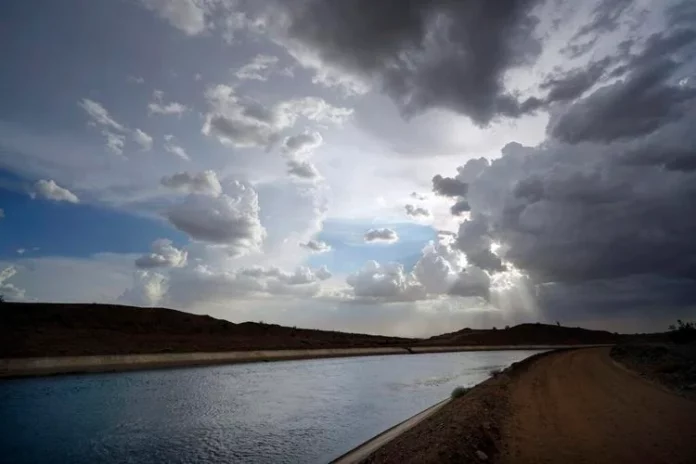
Governors Katie Hobbs of Arizona, Gavin Newsom of California, and Joe Lombardo of Nevada have developed a short-term plan to conserve 3 million acre-feet of water through 2026 to protect the Colorado River system.
“Thanks to the partnership of our fellow Basin States and historic investments in drought funding, we now have a path forward to build our reservoirs back up in the near term. From here, our work must continue to take action and address the long-term issues of climate change and overallocation to ensure we have a sustainable Colorado River for all who rely upon it,” said Governor Hobbs.
“The entire Western United States is on the frontlines of climate change — we must work together to address this crisis and the weather extremes between drought and flood,” said Governor Newsom at today’s announcement of the Lower Basin Plan.
The plan proposes early and large conservation of 1.5 million acre-feet of water by the end of 2024 to reduce the risk of Lake Mead and Lake Powell declining to critically low elevations. This is achieved by voluntary agreements with Tribes, cities, and agriculture in the Lower Basin states.
Altogether the seven Colorado River Basin States are responsible for the conservation of the Colorado River system, with Wyoming, Colorado, Utah, and New Mexico being the Upper Basin states. All seven states representing 40 million water users, support the plan as an alternative within the Near-Term Colorado River Operations Draft Supplemental Environmental Impact Statement (Draft SEIS).
With water being a critical resource for the Western states, Governor Lombardo affirmed, “Through this partnership, we look forward to equitably advancing our mutual goal of conserving our shared water resources. It’s never been more important to protect the Colorado River System, and this partnership is a critical next step in our efforts to sustain this essential water supply.”
The total compensated System Conservation proposed will be mandatory, enforceable, measurable, verifiable, and non-retrievable with up to 2.3 million acre-feet of conserved water federally compensated through the Inflation Reduction Act covering drought mitigation and preparedness and the remaining .7 million acre-feet “in whole or in part compensated by state and/or local entities or be uncompensated.”
The plan also makes accommodations for Lake Mead’s levels, Glen Canyon Dam operations, and Lake Powell releases.
“The Lower Basin Plan is the product of months of tireless work by our water managers to develop an agreement that stabilizes the Colorado River system through 2026,” said Governor Katie Hobbs.
The governors of Arizona, California, and Nevada submitted the plan to Camille Calimlim Touton, Commissioner U.S. Bureau of Reclamation asked that it be considered as an alternative to the Near-Term Colorado River Operations Draft Supplemental Environmental Impact Statement published in April by the Bureau.
In a separate letter to Deb Haaland, Secretary of the U.S. Department of the Interior, the governors of the lower basin emphasized that the implementation of the proposal would allow the basin states to focus discussions on measures that may be required after 2026 to address the impacts of climate change on system water supply availability and the existing overallocation of water.
Republished with the permission of The Center Square.













